Do tube amplifiers produce higher quality sound
than solid state? Looking at going higher end for better stereo has led me to this question. I won't be going back to a turntable but with going somewhat upscale on speakers I wonder if my Onkyo reciever is good enough to produce the best sound...
Comments (26)
jtwtech
16 years agolast modified: 9 years agoAs far as home audio goes, I don't know. However, Many guitar players prefer tube amps, because you can get a "warmth" out of them that you just can't get with a solid-state amp.
jdbillp
16 years agolast modified: 9 years agoDo you mean the "distorted sound of tubes" versus the "sterile sound of transistors"?
Both can sound terrific....or not. There is not blanket answer to this question. It depends on many, many things.
Listen to some amps and decide for yourself.But, if your speaker choice is high end, the current capability of the amplifier in your receiver may not be up to snuff to allow your speakers to do their best.
Related Professionals
Chattanooga Home Automation & Home Media · Cypress Home Automation & Home Media · Goldenrod Home Automation & Home Media · New York City Home Automation & Home Media · Potomac Home Automation & Home Media · St. Johns Home Automation & Home Media · Tampa Home Automation & Home Media · Wellesley Home Automation & Home Media · West Palm Beach Home Automation & Home Media · North Versailles Electricians · Vienna Handyman · Laguna Beach Lighting · Saint Petersburg Lighting · Scottdale Lighting · Tampa Lightingtobr24u
Original Author16 years agolast modified: 9 years agoThanks for replies. My tuner/amplifier is an Onkyo it is not flagship, but not far below it, and I will look at the specs. Another question, will modern tube amplifiers be as reliable as solid state, or do they still burn out at regular intervals as the old ones? I once had a Scott with tubes back in the 60s...
tom418
16 years agolast modified: 9 years agoApparently some people think so, as McIntosh still makes tube-type amps (the 2102, for example).
As far as tube vs. solid-state reliability, I had to send back my solid-state C29 preamp to McIntosh, to replace an op-amp in the phono section.
If a transistor, op-amp, etc. goes, it's a trip to the factory for a repair. If a tube goes, one has to simply plug in a replacement Mullard, Svetlana, or whatever...
roadrider
16 years agolast modified: 9 years agoYes. tubes sound better. They have a lifelike quality to the sound. A properly set-up tube equipment powered two channel music system will create a credible illusion of a live musical event. Despite having just two speakers a good system will "throw" a three dimensional soundstage above, below, to the left and right, and behind and in front of the speakers. It is stunning. Plan to spend at least a few thousand dollars. IMPORTANT - you want to purchase BOTH the new electronics AND the speakers as a system - to complement each other. Different speakers sound better/worse with different amps. There is an art to this.
The best audio dealer on the planet is Audio Connection in Verona NJ. Run by John Rutan, this shop has developed a national clientele of people who like to listen to recorded music. Audio Connection will steer you right and prevent you from wasting your money. I was buying and selling components, chasing better sound, till I found Audio Connection, who got me squared away. They carry high-value-for-the-money components, (still, not cheap) and have the knowledge and experience to put together a total solution. To get a sense of what people do to get great sound in their home, visit audiogon.com and scoll down to classified ads under, say Power Amps, Tube. You'll find equipment that costs as much as a new car - and that's just an amplifier. Do yourself a big favor and reach out to Audio Connection. You'll end up getting better sound and not wasting what could be alot of money on the wrong stuff. Good brands of tube electronics - Audio Research, Cary, Quicksilver, Musical Fidelity.tobr24u
Original Author16 years agolast modified: 9 years agoThanks for the input. I will expand my horizons beyond the local outlets for stereo. The point on reliability was well taken in regard to tubes vs. solid state, as I have been down that road with an Optonica solid state amplifier in the 70s, and the matching of the speakers to the amp makes a lot of sense...
roadrider
16 years agolast modified: 9 years agoGood tube circuits have stood the test of time, and good tube equipment is extremely reliable. I had an Audio Reseach SP3 Preamp that required service once in twenty years. My current SP16 preamp is five or six years old and has never required service. Tube power amps may require fresh output tubes every five or ten years or even fifteen years, it depends how often you use it. If something fails like a capacitor it is easily and relatively cheaply fixed. I just had to replace an output tube in one of my Quicksilver monoblocks (power amp that drives one channel). The tube was 12 years old. The replacement tube cost $55.00 Not bad for 12 years.
tobr24u
Original Author16 years agolast modified: 9 years agoLeaning towards the tubes after reading all of the input. I like to buy locally and we have one dealer that works with stuff like McIntosh not too far away so I'll give him a call. Thanks again...
oskiebabu
16 years agolast modified: 9 years agoIs your goal to replicate as close as possible the signal coming into the preamp and the amplifier? If it is, there is little doubt that good solid state is far superior to tubes.
The reason many guitar players use tube amps is that tube amps distort harmonically. They like that sound. When solid state is over driven it distorts with overtones that aren't particularly harmonic.
Of course, you should buy a receiver or amp that is suitable for your speakers and rarely clips, except for minisecond transients of very loud passages.
Sold state is infinitely more reliable than tubes. Solid state gives you far more power for the dollar spent, extending the variety of speakers you can use. Robert Carver. acoustic and electrical engineer extraordinaire, who started Carver electronics and much later sold it and then started Sunfire created a solid state amp that increased the output impedance of the solid state amp (like tubes have) and made it so that in double blind tests no person could tell the difference. Even the so-called "golden-eared" people.
That is not to say there aren't some well-made tube amps that sound about the same as solid state--but they are quite expensive. Try finding a 150 watt per channel tube amp with 5 to 7 channels. If it exists it would cost a fortune. Also tubes generate a ton of heat and eventually need to be replaced. If you live in cold weather places, you might like the added heat. Or if you love old-timey things and like the glow of tubes, then go for it.
But to really make a good recommendation for you, one would need to know how large your room is, what kind of speakers you have--the impedance and the sensitivity, etc.
Tubes work best in a stereo rig where the room isn't too big. I would never recommend tubes in a surround system.
Let us know your budget.
Greg
tobr24u
Original Author16 years agolast modified: 9 years agoHmmm. OK I have to admit a passion for two channel stereo and love a well rounded discussion on this matter. This site is good as I have tried the Audio Asylum and it is nammed correctly. As this is probabbly my last hurrah at 72, I want to go out as far as financially feasible, or realistic, perhaps 10K for everything, which really means just the amp(s) and speakers (I have an onkyo 6 CD changer and you might comment on that as to replacement or not)... So tell me how you would spend and the specific products...
tobr24u
Original Author16 years agolast modified: 9 years agoThis is a fairly large living room in a condo but I sit at one end sideways to a fireplace with glass sliders almost behind me at an angle with plastic vertical blinds. However,I don't sit far from my speakers (6 to 8') and arrange my speakers at equal distance to me and aimed toward me so as to get the balance right in front depending on the recording. This seems to be fine, but any thoughts would be appreciated...
oskiebabu
16 years agolast modified: 9 years agoHow close you sit has some effect, but the fact that the room is large will take up a lot of your sound. If you want great and beautiful full range stereo speakers with built-in subwoofers I can think of none better at anywhere near the price of the Strata Mini (it isn't small by any means--47" high x 17.5" deep x 11.5" wide. It comes in beautifully polished South American Rosewood for $1,995/pr and an even more luscious (if believable) Piano Rosewood at $2,295/pr. It is made by the same people who make Onix and Rocket speakers (both excellent) and each speaker weighs about 95 lbs. Having heard them on two occassions I was mightily impressed. And I've listened to speakers over 20K. You go to the AV123.com site. To be great they require good and powerful amplification. Too bad Emotiva is no longer sold at this site, but you can go to their site--Emotiva.com. The Emotiva RPA-1 is a gorgeous stereo powerhouse with 200 watts/per channel into 8 ohms and 350 watts/channel into 4 ohms and amazingly oinly costs $699. Look at these specifications:
Dual mono block design
Extremely low residual noise floor
 Dual high current toroidal power transformers
 Enhanced Emotiva EPM power module topology
 200 watts RMS per channel into eight ohms
 350 watts RMS per channel into four ohms
 1Hz  80kHz bandwidth
 THD+N - .015%
 Convection cooling
 Analog VU meters
 12VDC trigger input
 Balanced XLR and unbalanced inputs
 Tiffany style RCA inputs
 High-quality, high current binding posts
 Panel dimmer
 Milled multi-element floating wing faceplate with indirect cobalt blue illumination.
 Dims: (HxWxD) 6" x 18 7/16" x 16 7/16"
 Weight - 60 lbs.
Add the matching Emotiva RSP-1 stereo Pramplifier at $699. It's specs are as follows:
 Precision low noise phono input with moving magnet or moving coil capability
 Five stereo inputs with precision instrumentation grade relay switching
 Microprocessor controlled pure analog signal path
 VFD display for all inputs and functions
 Full remote control operation
 Completely integrated bass manager for 2.1 operation with selectable frequency stereo high pass and mono low pass outputs
 Independent full range outputs (available simultaneously with 2.1 output)
 Tiffany style machined and gold plated discrete RCA connectors for all inputs and outputs
 All outputs, stereo and 2.1, are also available on balanced XLR connectors (standard)
 Tape monitor loop
 External processor loop
 Source Direct bypass
 Stereo / Mono switching
 Treble and bass trim controls
 Large format Alps precision film volume potentiometer with motorized control
 Headphone output
 Illuminated input indicators
 Panel dimmer
 Milled multi-element floating wing faceplate with indirect cobalt blue illumination.
 Infrared input and output connectors
 12V trigger output
 High quality machined aluminum remote control with discrete tact switches
 IEC power inlet, 120/230 VAC user configurable
And if you buy both together instead of paying almost $1400, you pay $1,299. You get price no bounds great stereo performance with unbelievable looks, great phono inputs for moving magnet and moving coil, and a quality headphone amp. It would be a bargain at many times the price. Just go to Emotiva.com
The reviews on the Strata Mini's and these Emotiva products have been uniformally outstanding.
Now you just need a great cd player and if you and/or your wife wouldn't mind, some good looking acoustic bass traps and acoustic panels. But that part you can put off to later after you first listen. And all these products can be returned at 30 days with no questions asked and full refund--except for shipping.
I have to leave now, but I will get back to you on the cd player. Let me know if you also listen to DVD-A's and SACD's besides CD's. And at 10K you still have plenty of money left for a great turntable and cartridge if you have a record collection.
Greg
tobr24u
Original Author16 years agolast modified: 9 years agoGreg, thanks for the comprehensive reply. I will check this stuff out. I haven't botherd with SACDs or DVD-A's, as it would require more or different equipment and there did not seem to be that much material to listen to. With new equipment, I will incorporate these formats if they come with the CD player or DVD player that is recommended.
oskiebabu
16 years agolast modified: 9 years agoDo you want a good dvd player that plays cd's and decodes HDCD or do you just want a redbook cd player that also decodes HDCD?
Greg
tobr24u
Original Author16 years agolast modified: 9 years agoRight now I have a six CD Onkyo changer that is fiber optically connected to my Onkyo Receiver/Amplifier. I am waiting on the a new DVD player as there doesn't seem to be that much HD material on DVD and I hardly watch TV except for the news. In short, I guess I am trying to focus on speakers and amplifiers and perhaps still use my Onkyo changer. BTW, in looking up some of the stuff that you mentioned I stumbled on to Stereomojo; it is a great site devoted to two channel stereo for those that don't want to mortgage the farm to get it. Any additional thoughts would be appreciated...
oskiebabu
16 years agolast modified: 9 years agoI would get the Emotiva stereo amp I mentioned above and attach it to the Onkyo receiver through the pre-outs, which I presume it has. If you have the budget and like full range tower speakers I would still go with the Onix Strata Mini. The performance with the Emotiva amp will blow your mind. If you want bookshelf speakers that is an altogether different issue. I don't know if I am above your budget or below. What are you willing to pay for great sound? Or what do you want to pay for very good sound? Is the Emotiva and Stata Mini above your budget?
Greg
tobr24u
Original Author16 years agolast modified: 9 years agoGreg, here is a challenge that you and others might enjoy. Take 10 grand and spend it anyway you want for two channel stereo. You could keep the Onkyo amp and CD changer or pitch them. Only must, floor standing speakers...
oskiebabu
16 years agolast modified: 9 years agoI'd certainly pitch the Onkyo receiver. I would still get the Emotiva 200 watt/channel amp in stereo and the Emotiva stereo preamp. That leaves a lot of money for speakers.
If you have the room to have speakers at least 3 feet from the front wall and at least 3 feet from side walls, the best speakers I have ever heard are the Linkwitz Orions--available at the Linkwitz site. This is the same Siegfried Linkwitz of Linkwitz crossover fame that is still used by many speaker manufacturers. Each driver is individually amped (the best way to get the best performance from any driver) and it is an open baffle speaker--hence theneed for space behind the speakers.
These are the specifications:
Open baffle cabinet
Outside dimensions: Height 46.25" - Width 13"
Depth 2" at top, 12" at base, 16" at 14" up
Weight 60 lb (27 kg)
3-way active speaker system
Crossovers at 120 Hz and 1440 Hz, both LR4 (24 dB/oct)
Crossover/Equalizer using two ORION ASP printed circuit boards
Tweeter - Seas T25CF002 - No, not a ribbon -
42" up, no 2.8 kHz notch filter as in PHOENIX
Preferably no grill to cover the tweeter
Midrange - Seas W22EX001 - No, not a smaller diameter -
Front mounted to baffle, no spine, but see Revision 0.1
34.5" up, 5 kHz notch filter
Woofer - two Peerless 10" XLS, 830452
Push-pull mounted in H-frame of 11.5" x 11.5" x 24.5" OD
Each driver with its own >60 W amplifier
Response -3 dB at 30 Hz (-6 dB at 20 Hz for Q = 0.5 and -12 dB/oct to 5 Hz)
Eight power amplifiers (e.g. ATI model AT6012)
Room size: >180 ft2 (>17 m2) area, >8 ft ceiling
Speaker placement measured from tweeter:
>4 ft from wall behind it, >2 ft from side walls,
speaker separation >8 ft
Listening distance 8 ft to 18 ft
Room acoustics: Fairly live with RT60 of 400 ms to 700 msIf you are handy you can save a lot of money by building much of the speaker yourself. You can also have the more difficult parts asembled and have Wood Artistry make any kind of gorgeous frame you want and still save a lot of money. Otherwise, the speakers will cost at least $7,500 a pair with the amps, individually adjustable and adjusted crossovers, etc. There is no speaker I have ever heard that sounds as amazing and real life.
The above being said, The Emotiva set-up with the Start Mini's (which are hardly mini) are unbeatable at anywhere near the price.
Greg
tobr24u
Original Author16 years agolast modified: 9 years agoThanks for the recommendation. I will check around the Internet for these components...
roadrider
16 years agolast modified: 9 years agoDon't agree at all with the advice from oskeibabu. Would your rather own a muscle car or a Ferrari? Specs are meaningless and don't tell you a thing about sound. And why ruin the look of your room with gigantic speakers when elegant small ones sound fantastic. You need 200 watts a channel like you need a 750 horsepower car. Ridiculous. Go to Augiogon.com and look around for premium used equipment from Audio Reseach, Cary, Musical Fidelity, Quicksilver, Manley, Vanderstein, ProAc. Spend $1500- $2500 on the speakers, $2K-$2500 on the power amp(s), $1500 - $2000 for the preamp. If you play CDs you need a player with a great Digital Analog Converter. Look round audiogon.com
arley_gw
16 years agolast modified: 9 years agoTube gear can be a tad finicky, but when set up properly it has a warmth and musicality that most solid state stuff just doesn't match.
Measurements mean very little in determining audio quality. Yes, you need to know if your amp puts out 20 watts per channel or 200; but among items in the same power range the only instruments you need to judge quality are your ears.
I have a now defunct modified Dynaco tube amp, replaced with a NAD solid state power amp. The NAD is fine and reliable, but it doesn't sound as smooth and musical as that half-century-old Dynaco did.
oskiebabu
16 years agolast modified: 9 years ago"Overall, the valve (tube)is still an almost mystical thing, but in all honesty, modern amplifiers using transistors or MOSFETs are so vastly superior in terms of fidelity, efficiency and reliability, that I really don't see what all the fuss is about. Having said this, I was using a valve preamplifier on my own system until recently." --from Rod Elliot---I recommend his site on all questions related to audio.
There is no doubt that valves do have some very nice characteristics, and for guitar amplifiers there are few guitarists who would argue otherwise. Guitarists love the sound of soft clipping that tubes make, rather than the harsher sound of over-driven MOSFETS or transistors. A soft overload behavior means that a valve amp does not sound as harsh as a transistor amp when it is overdriven - which is great for guitar, but a hi-fi should never be overdriven anyway, so the point is moot.
The problems that befall valves are many, and include
Fragile - The glass envelopes are very thin, and are easily broken.
Limited Life - Even if a valve is operated well within its ratings, it still has a finite life. The main causes of valve failure are cathode emission degradation (happening all the time), and gas, when small amounts of air "break" the full vacuum.
Microphonics - All valves tend to be slightly microphonic, which is to say that they act as a microphone. This can cause additional colouration to the signal if the sound from speakers vibrates the amplifier.
High Voltage - Having to ensure that the 600V DC typical of a high power amp does not "flash over" valve bases is a constant headache, and ensuring that these voltages are kept well away from small fingers is mandatory. High voltage capacitors are also more expensive than lower voltage ones.
Heaters - Valve cathodes must be operated at the correct temperature so they emit electrons properly, and "boil off" contaminants. If the heater voltage is too low, the cathode will become poisoned, and the valve is useless. The heater power used is all wasted, in that none of it is turned into sound.
Output Transformers - The output transformer for a valve amp is expensive, bulky and heavy. It introduces its own distortion components, which are difficult (or impossible) to eliminate completely.
Heat - All valve amps run hot. The valve will not work unless it is hot, and the heat causes problems for other components, shortening their life. The heat is all wasted energy.
Damping - Valve amplifiers nearly all have a low damping factor, caused by a relatively high output impedance. Speakers must be very well damped indeed to work well with any valve amp, or the bass will become poorly defined, and crossover networks (which rely on a very low amp impedance) may not work as well as intended.
On the positive side, valve amplifiers have a "warm" sound, partly because of the low order harmonic distortion introduced and because of the much higher impedance level compared to solid state. A good valve amp will also have a very wide bandwidth, and will have an easy job driving loads that cause solid-state equipment to have severe heartburn (or just blow up on the spot). But then again, how many people own 2 ohm speakers. Personally, I would never buy a speaker that is so poorly designed that it required a special amplifier.At low listeneing levels, valve equipment has vanishingly small distortion levels, and when all is said and done, there is something nice about little glass tubes, with little lights inside, making your music.
But watt for watt, dollar for dollar, and if accuracy of incoming signal is of your highest importance, buying tubes are definitely not the way to go. Robert Carver has built solid state amps (with a so-called niceness and warmth switch) that tube-heads couldn't tell the difference from.
But if you get you your stereo info from expensive retailers, true-believers, and Stereophile-type magazines rather than acoustic and electrical engineers you are likely to be led down the path of subjectivism, rather than objectivism.
The repair rate and replacement rate of tubes is so far greater than solid state devices it is ridiculous. Unless you live in very cold weather and need the extra heat--go solid state:-)
We all know that heat is the enemy of electronics. That is why heat sinks and fans exist. Krell, Meridian, Levinson, are all solid state and they are generally considered to be the Rolls Royce of the industry. In the age of DSP's and amplifier impedance output adjustment it makes almost no sense for tube amps for the average audiophile and every listener.
But if you love the look of glowing tubes and don't have kids with prying hands, go ahead and buy one.
Greg
tobr24u
Original Author16 years agolast modified: 9 years agoReally enjoying this discussion and haven't made a final decision yet as it would "end" my quest. As you can see by my new thread I am not all that sophisticated and I was lucky that the tweeter damage is on my old speakers and not any that I might have replaced them with. Looked in on Rod Elliot and the guy is truly amazing in his scope and depth of knowledge. Any additional input is certainly welcome...
arley_gw
16 years agolast modified: 9 years agoGreg: I agree that dollar for dollar, solid state stuff is more efficient, a better deal,more reliable, etc. --everything that you said. And tubes are prone to every problem you said. But consider this argument:
Almaden Golden Chablis at $15 for a five liter box is a much better buy than Chateaux Margaux at $100 a bottle, and plus, you don't have that pesky sediment, it doesn't vary from year to year, and you don't have to store it on its side for years. Therefore Almaden is objectively superior to Chateaux Margaux.
Evaluation of music and its reproduction is inherently subjective. I can't remember the last time I went to a symphony concert with a sound pressure meter and said, "My, that crescendo hit 96 dB!!! Wow, that made it great!"
Yes, you should look at specs. But the most important measuring devices are your ears. If you can't hear any difference between tube and solid state, by all means buy the most efficient bang-for-the-buck item you can find, and that'll be solid state. But if you do hear a difference, the response should not be, "Let me get out my voltmeter and oscilloscope to determine which one is better", but rather "Which one sounds closer to the original sound?" The tube amps I've heard have a far better ability to reproduce nuances and to image a soundstage than the solid state amps I've heard.
The wine analogy is apt. For most people, myself included, it's not worth the expense to drink Chateau Margaux. But just because Almaden is a better buy does not make it a better wine.
Please, when it comes to music, lead me "down the path of subjectivism, rather than objectivism" (your words) any day. (grin) I'm happy with the judgments my ears make.
Cheers
Lee
elks
16 years agolast modified: 9 years agoI have to weigh in with Greg: tubes sound good but are finicky.
His comments about the harmonic distortion of tubes are true; transistor amps clip hard or ungracefully, which means they sound ugly when pushed into clipping. Both should service one well. That said, I have been using an old class A amp for 29 years and had to do nothing to it. It still operates beautifully, though a couple of LEDs on the power meter ladders are burnt out.
Double blind screen listening tests long ago put to rest the myth that amps sound different when driving the same speakers at exactly the same volume level, though one could argue that some speakers are more difficult to drive than others.
Unlike Greg, I have been out of the market for for 14 years, so cannot offer any advice on products, save for a preference for some speakers, like those made by Paradigm, psb, and Audio Products Internatioal, which make Energy and a few others. Having been in the industry, I am well aware of the gamesmanship of the producers, or in salesmanship jargon: sell the sizzle, not the steak.
Greg again is quite correct in focusing on the room, it being a major influence on the sound. I'm not so certain that it is possible to better today's speaker engineers as it was 30 years ago. Those guys really know what they are doing, and their methods of designing and testing are far beyond what we mere tinkerers can accomplish. Nevertheless, it is great fun to put together one's speaker from parts.
Steve.
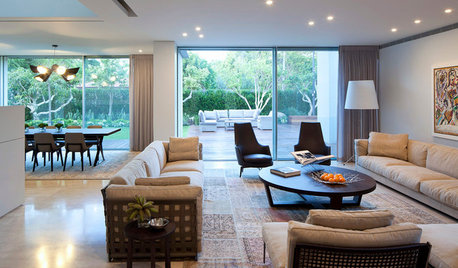


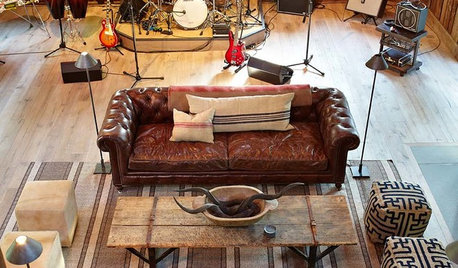
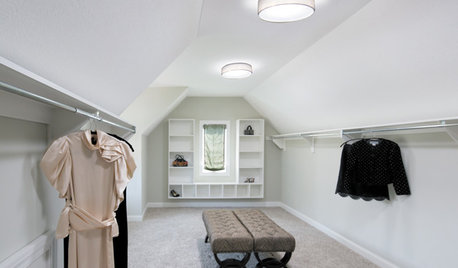
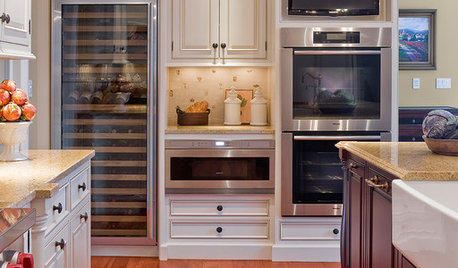

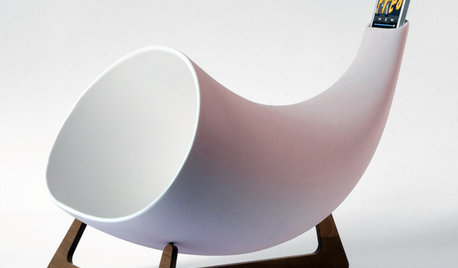

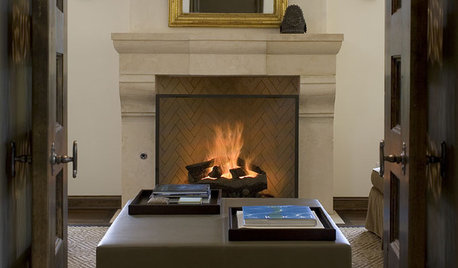






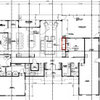
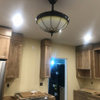
oskiebabu